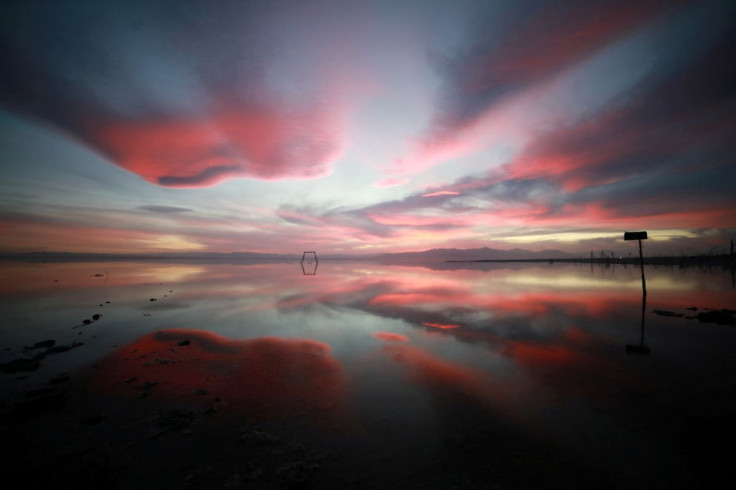Salton Sea's Lithium Treasure Trove Set To Turbocharge EV Battery Production

California's Salton Sea is home to at least 3.4 million tons of recoverable lithium deposits, the U.S. Department of Energy (DOE) announced Tuesday.
The announcement came after a report published by researchers at the Lawrence Berkeley National Laboratory found that, pending technological advancements, the region's total resources could support the production of 382 million electric vehicle (EV) batteries—more than the total number of vehicles currently registered in the US.
The Salton Sea is an active tectonic and volcanic zone in Imperial County, California, which is home to geothermal brines currently being exploited for use in dozens of geothermal energy plants. These brines alone contain more proven lithium deposits than those of China and Argentina, the world's #3 and #4 producers of battery-grade lithium, according to the researchers at Lawrence Berkeley National Laboratory.
"This report confirms the once-in-a-generation opportunity to build a domestic lithium industry at home while also expanding clean, flexible electricity generation," Jeff Marootian, Principal Deputy Assistant Secretary for Energy Efficiency and Renewable Energy, said Tuesday in a DOE press release.
U.S. Poised For A Lithium Boom
This discovery isn't actually "once-in-a-generation," nor is it even the most substantial lithium find in the US thus far in 2023: In August, it was revealed that the McDermitt caldera region straddling Northern Nevada and Southern Oregon contains 20 to 120 million tons of recoverable lithium deposits in volcanic clay.
The discovery region in Nevada is already home to an existing mining contract with Canadian firm Lithium Americas that aims to produce 80,000 tons of battery-grade lithium per year by 2030. Meanwhile in California, a handful of Salton Sea geothermal facilities have already begun the process of expanding existing operations to include mineral extraction, and signed multibillion offtake agreements with General Motors, Ford and Stellantis earlier this year.
Existing geothermal facilities already extract up to 127,000 tons of dissolved lithium per year, the researchers found, which would place the Salton Sea roughly on par with Chile (the world's #2 lithium producing country) in annual production if refined into battery-grade lithium. Australia is the world's largest producer, with over 300,000 tons of output in 2022.
Combined, the two recent discoveries in Nevada and California make the U.S. home to the largest confirmed lithium deposits in the world—after registering comparatively insignificant resources just a few years prior—ahead of current leader Bolivia (23 million tons).
Enhancing lithium-ion battery value chains is a vital part of the U.S.' energy transition strategy. This recent discovery will serve to bolster the Biden Administration's stated goal of maintaining entirely domestic supply chains for future battery production beginning in 2029.
Research and development, construction and establishing a state regulatory framework are all remaining challenges ahead of large-scale lithium production in the Salton Sea.
As global EV adoption continues to accelerate, the race for control of lithium and rare earth resources gains progressively higher stakes.
© Copyright IBTimes 2024. All rights reserved.






















